| Brigada Anti-Tero a SRI - Romanian Intelligence Service's Anti-Terrorism Brigade - |
|||||||||||
|
Some countries have their main anti-terrorist force incorporated, or under the command of, their Armed Forces. US Equivalents: Delta Force, SEAL DEVGRU |
|
||||||||||
| Back to Index | | | Secret Services: | | | | SRI's Anti-Terrorism Brigade | | | FIAT | | | SIE's Anti-Terrorist Group |
|
|||||||||||||||
History | |
|
Terrorism, in the form we know it today, appeared during the early part of the last century. Hardly surprising for anyone, its birthplace was the Middle East. | |
|
This crucial point in history marks the beginning of two things: the first is the constant presence of terrorism in that region, due to the fact that the Israelis proved that enough terror shed upon a force or a country can make it lose its willing to fight or occupy a teritorry. The second is that, before they left, the Brits messed-up the teritorries of the Arab population in such a way, that peace was impossible to hold for more than a few years. |
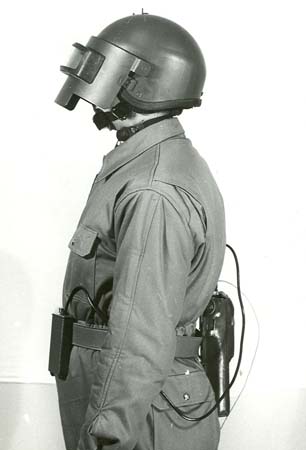 USLA operative - identical gear with KGB Alfa at that time |
|
USLA was composed of intelligence personnel, as well as combatants. The combatants were trained in a matter similar to the one of the Special Forces, however their training underlined urban warfare, hostage rescuing and other such activities.
|
|
One of the basic skills an operator must develop is being able to distinguish a hostage from a terrorist in a fraction of a second. This exercise is exactly the same as the one practiced by Delta Force and SAS in their own CQB training sessions. | |
|
Also, as you see in the picture to the right, the BAT rescue team goes into a building to liberate the hostages and arrest the terrorists. As confusion, smoke and lack of sufficient light make the job harder, the operators must quickly make the difference between the hostages and the hostage-takers. Although this sounds easy, it takes many years of daily training to accomplish, and as you've probably seen on CNN, in most countries, it usually fails. I will not comment on other countries' operations, and how they always manage to kill the hostages and let the terrorists escape, however a professional force should normally do the exact opposite of that. |
 420x230, 13 kb JPEG close quarters battle exercise |
| |
Weapons | |||||||
|
The weapons employed by Brigada Anti-Tero vary from mission to mission, however their arsenal is one typical for any anti-terrorist force. |
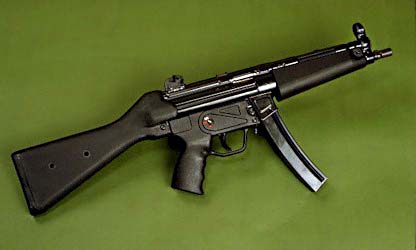 416x250, 11 kb JPEG
This is a foreign MP5A2The particular weapon displayed in this picture is not employed by the BAT | ||||||
|
The H&K MP5A3 can also be fitted with a laser spotlight, which enables the operator to see exactly there the bullet will hit its target, as well as with a tactical lantirn, which is used when entering dark rooms. |
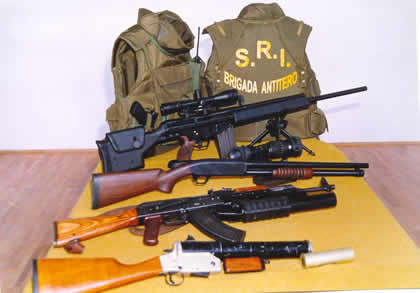 420x293, 17 kb JPEG
You can see here the main weapons employed by the BAT operators.
The protective suit, the PSG-1 sniper gun, the shotgun, the AKM and other weapons, including the 9mm Glock (near the upper left grey protection vest). |
||||||
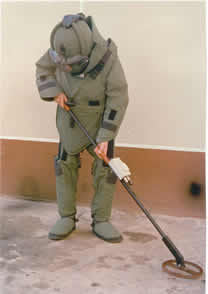 208x294, 6 kb JPEG When checking a suspicious package or suitcase, the operators use this heavy kevlar suit, that weights more than 20 kg. The suit, meant to deflect the blast of an explostion, can only offer partial protection to the user, and that is why a device is used to check the suspicious object, which blasts a jet of water with the speed of 200 meters per second into it. That way, in case there is an explosive device inside, it will surely detonate. |
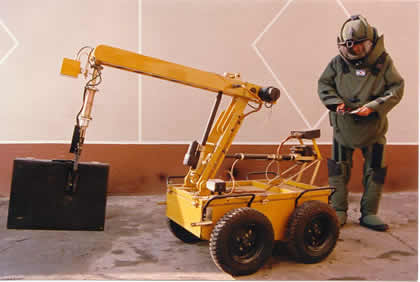 420x282, 16 kb JPEG However, for suspicious objects that are too large to handle by humans (due to the huge explosive capability that can be hidden inside), a robot is employed. The operator that you could see testing the device in the left picture, is using a device here to control the robot from a safe distance. The robot now does the work, and in case of an explosion, a robot can always be replaced. But human life can not. |
||||||
|
|
|||||||
| |||||||
Oder of Battle | |
|
SRI has a Bureau in each larger town. The larger the town is, the larger the bureau. Usually Bureaus are composed of intelligence employees and other employees from different sections of the SRI. SRI has divisions who's mission is to fight organized crime, to observe the movements of convicted criminals which have been released from prison, as well as counter-intelligence, etc. | 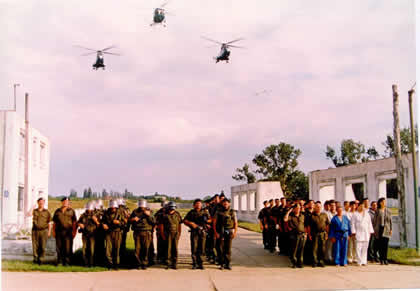 BAT graduation class. You can observe the mock buildings in the training area, the combatants, the NBC personnel, intelligence and support personnel, as well as one IAR-316 Alouette III helicopter and two Mi-8 Hip helicopters |
BAT also has a special section, composed of the most experienced operators. This structure, called "Delta", can be deployed anywhere in the country in a matter of hours. | |
| |
|
Operation Bus
In the early 1980s, a group of young men eager to run away to Western Europe had the misfortunate idea of occupying a bus and take all the passangers plus the driver as hostages. The three men, two construction workers and a student, managed to break into a military supply building in the village of Pui, Timis country (W Romania) and steal weapons and ammunition, which they later used to intimidate the bus passengers and driver. | |
Seeing the cars, the hostage takers were frightened and as negociations werent leading anywhere, they shot the bus driver. At that moment, the USLA fighters opened fire on the bus from the distance. Due to the distance involved and the midst of the situation, 6 hostages were killed and 17 more were wounded, but it remains unclear if they died (or were injured) by the rounds fired by USLA or the hostage takers. One could assume the latter since the hostage takers showed no remourse in shooting the driver in the beginning. Amazingly, USLA managed to capture all three hostage takers alive! |
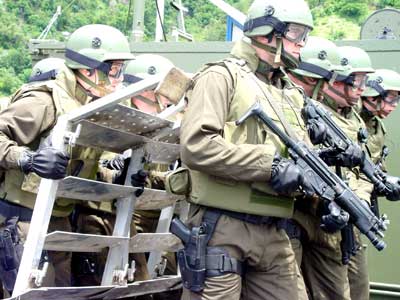 400x300, 27 kb JPEG
BAT during an assault training session
|
In 1990, Tudor Postelnicu and other decision factors which have participated in that mission have been found guilty of murder of the first degree and sentenced to 17 years in prison. | |
|
Hawks 1
USLA had air marshalls, or sky marshalls, long before the much-publicised war against terror which is so popular today. The idea of putting sky marshalls on civilian aeroplanes is not an invention of the US, and was not first used after September 11th, 2001, as so many foreign self-entitled "experts" claim in newspapers willing to publish their opinions. | |
Among the several countries which had air marshalls long before 2001, Romania used some of its USLA operatives as passangers dressed in civilian clothing, at least for internal flights. It is unclear if they were also used for international flights, but perhaps we can assume the answer is yes. |
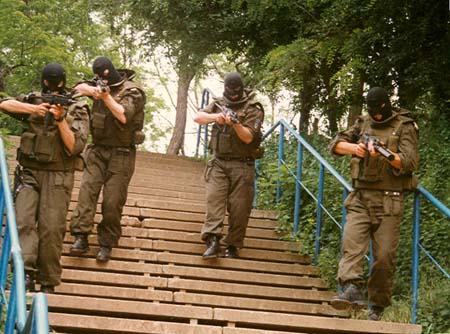 450x334, 42 kb JPEG
|
|
Hawks 2
As you might have guessed, Hawks was the internal designation for USLA operators used as sky marshalls on civilian flights. Soon after their first intervention, a new, more dangerous one followed less than a year later. | |
On the 16th of january 1984, two young men have attempted to take control of the Bucharest-Arad flight. The aircraft was an An-24 belonging to the national air carrier TAROM. |
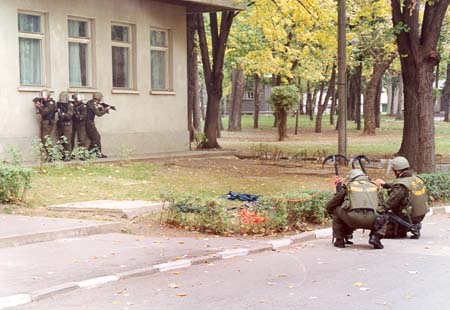 450x310, 31 kb JPEG
|
|
Arabian attempts
A year later, in the 26th of may 1985, two Arabian terrorists have placed explosive ordnance in a car parking in Bucharest. |
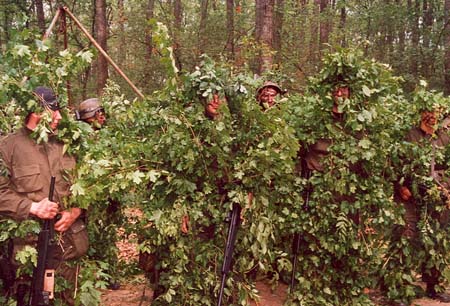 450x306, 50 kb JPEG
|
|
The 1989 Revolution
The data available regarding USLA operations during the 1989 Revolution is too large to discuss here, and writing appropriately about such a subject would flood this page. I therefore have decided to keep things short and make only a quick description of only a small part of the operations which took place at that time. |
|
What increases the disgust regarding this event is the fact that a large crowd of revolutionaries gathered afterwards to witness what happened. They were told the mutilated and burned bodies lying on the street belonged to terrorists, which have come to Romania to counter the Revolution and bring back the dictator Nicolae Ceausescu. As it is always the case with enraged, uneducated masses which gather strength from numbers, the revolutionaries manifested their hate towards the so-called terrorists the way they knew better. As such, hundreds of people hit the remains with bottles, wooden sticks and stones, while some even urinated on them as a sign of disrespect. The wife of one of the two seargants happened to cross around the day after, and she noticed a large group of people swearing and mocking the remains of a few dead individuals on that street. As she approached, she was shocked to see that one of them was her husband, in combat uniform. She did not dare say anything, feared of being lynched by the masses, so she immediately set her way to the Ministry of Defense to report the situation and ask officials to remove the bodies from the street. |
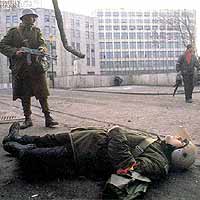 200x200, 8 kb JPEG One of the USLA operators which died in that operation. This photo was conveniantly taken after the crowd was cleared and a soldier was set to guard the area. |
|
The instigators |
|
|
Preventing the assasination of the Indian Ambassador
On the 20th of august 1991, an Indian commando composed of 4 terrorists, attemped to assassinate the Indian Ambassador in Romania. Imagining probably that they were in another country, they planned to follow the Ambassador as he was strolling with his wife on the streets of Bucharest and shoot him on the spot. Unfortunately for them, the BAT members which were assigned protection duties around the Ambassador appeared out of nowhere and have acted immediately. One terrorist was shot dead on the spot, another one was captured alive, a third one was injured and the fourth managed to run away in the midst of the confusion. |
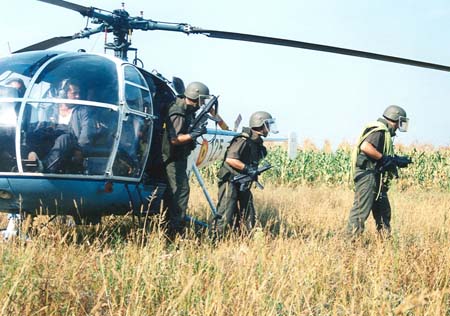 450x316, 38 kb JPEG
|
|
Capturing of a defector
As BAT has the constitutional right to intervene in cases of defection, they were called upon during such an event. |
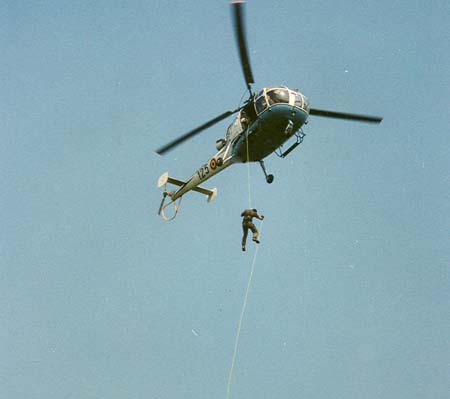 450x339, 13 kb JPEG This image depicts a BAT operator rappelling from a much smaller IAR-316B Alouette III helicopter, and has no connection to the event described in this section, nor with the large Mi-17 helicopter.
|
| |
|
Stories [... this section is still under construction ...]
|
 | standard equipment of the BAT |
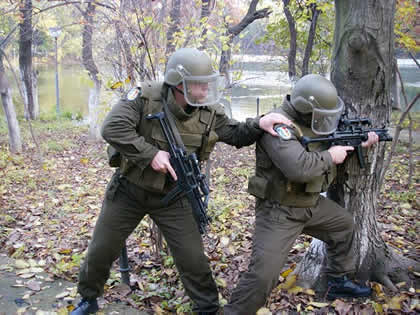 |
a pad on the back tells the other fighter that you are retreating. He will continue to push the enemy off until you reach your next defensive position, and then he will retreat too, this time behind you. Then the procedure is started all over again. This is the standard re-groupping procedure for special operations forces around the world. |
Sorin Romanian Special Forces Web Site is Copyright © 2003-2006 by Sorin A. Crasmarelu |